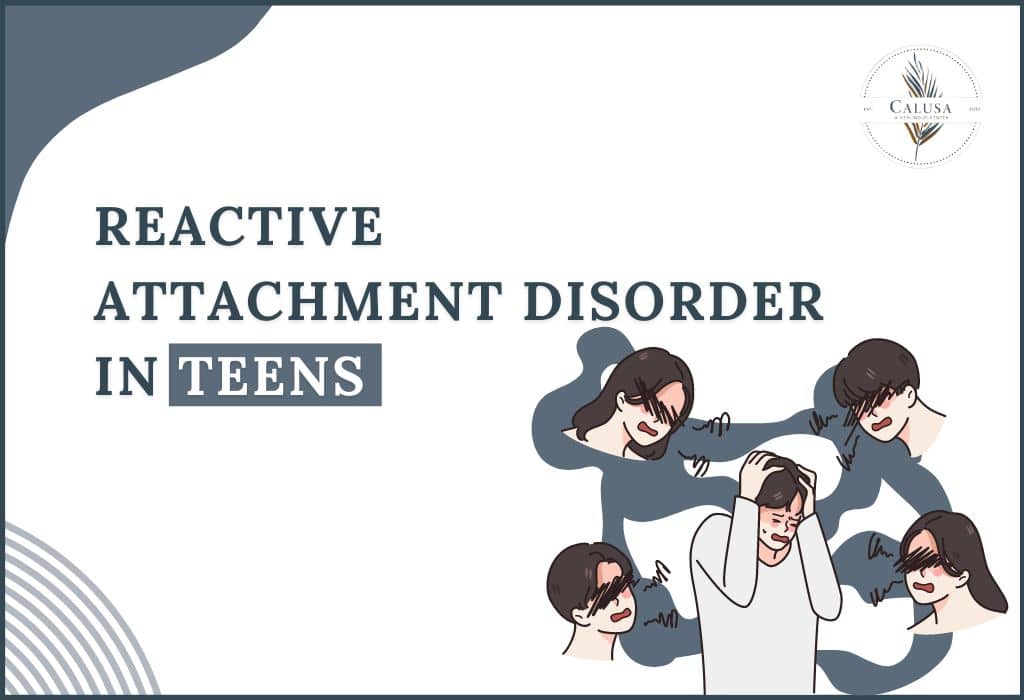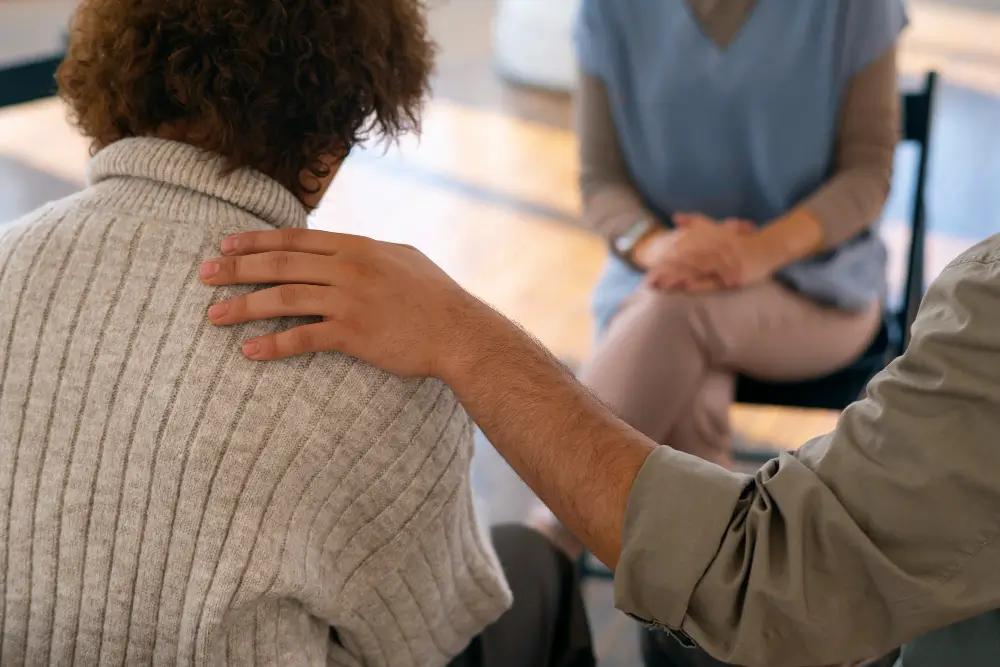The teenage years are complex, involving emotional growth and social exploration. For teens with Reactive Attachment Disorder (RAD), this period is particularly challenging.
Reactive Attachment Disorder (RAD) stems from disrupted early attachments, often due to neglect, abuse, or frequent caregiver changes, hindering a teen’s ability to form healthy, trusting relationships.
This blog explores RAD challenges in teens, covering signs, attachment styles, and effective support strategies. It offers insights for parents, caregivers, and professionals to help teens foster healthier relationships and navigate toward a brighter future.
What is Reactive Attachment Disorder?
RAD affects teen connections, stemming from troubled early attachments when basic needs for love and care were inconsistent due to neglect, abuse, or caregiver changes.
Key Signs of RAD in Teens
- Struggles to trust or form close bonds
- Acts withdrawn or seems unfazed by comfort
- May be clingy or overly familiar with strangers
- Shows extremes in emotions or difficulty expressing them
- Engages in risky or impulsive behaviors
RAD vs. Other Attachment Issues
It’s important to note that RAD is a more severe form of attachment problem. While many teens experience some attachment difficulties, RAD is characterized by a consistent pattern of extreme behaviors and a significant inability to form healthy relationships.
Causes of Reactive Attachment Disorder in Teens
What Causes RAD in Teens?
RAD takes root in a teen’s early years when their brains are wired to form secure attachments with caregivers. Disruptions to this critical development can lead to RAD. Here are the key factors:
- Neglect and Abuse: Damages trust and ability to form attachments.
- Inconsistent Caregiving: Frequent caregiver changes hinder security and trust. Early
- Childhood Experiences: Institutionalization, hospitalization, or prolonged separation from caregivers.
It’s important to consider:
- Genetic Predisposition: Genetics may increase vulnerability to RAD with neglect or abuse.
- Environmental Factors: Poverty, social isolation, and lack of support increase RAD risk.
Symptoms of Reactive Attachment Disorder in Teens
Teens with RAD experience a confusing mix of emotions and behaviors that can make relationships challenging. Here are some common symptoms:
- Emotional Detachment: Distant, unemotional, often isolated.
- Relationship Struggles Difficulty maintaining connections.
- Trust Issues: Fear of intimacy, pushing others away.
- Behavioral Issues: Aggression, defiance, risky behaviors.
Diagnosing Reactive Attachment Disorder in Teens
Diagnosing RAD in teens requires a thorough evaluation by a qualified mental health professional, typically a child psychiatrist or psychologist. There’s no single test for RAD, but the diagnosis relies on a combination of factors:
Diagnostic Criteria
Mental health professionals use the criteria outlined in the Diagnostic and Statistical Manual of Mental Disorders (DSM-5) to diagnose RAD. These criteria include:
- Inconsistent caregiving in early childhood.
- Limited emotional response from caregivers.
- A persistent pattern of emotional detachment or inappropriate social interactions began before age 5.
Role of Mental Health Professionals
During the evaluation, the mental health professional will:
- Gather detailed childhood and current behavior data.
- Conduct clinical interviews with the teen and caregivers.
- Employ standardized tools for emotional and social assessment.
Assessment Tools and Techniques
Some common tools used in RAD diagnosis include:
- Clinical Interviews: Assess history, symptoms, and interactions.
- Parent Interviews: Gather early experiences and current behavior.
- Behavioral Scales: Evaluate emotional and social behavior.
Differentiating RAD from similar conditions like ASD or PTSD is crucial for accurate diagnosis and effective treatment.
Impact of RAD on Teen Development
RAD casts a long shadow, impacting various aspects of a teen’s life. Here’s a closer look at the consequences:
Emotional and Social Development
- Low Self-Esteem: Struggle with self-worth.
- Emotional Regulation: Difficulty managing emotions.
- Empathy Challenges: Trouble understanding others’ emotions.
- Isolation: Leads to loneliness.
Academic Challenges
- Focus Issues: Emotional turmoil affects concentration on schoolwork.
- Disruptive Behavior: Frustration leads to classroom disruptions.
- Relationship Struggles: Trust issues hinder positive relationships with teachers and peers.
Long-Term Consequences if Untreated
Left untreated, RAD can have lasting consequences for a teen’s future. Potential issues include:
- Relationship Struggles: Difficulty forming and maintaining healthy relationships.
- Mental Health Issues: Higher risk of depression, anxiety, and substance abuse.
- Employment and Social Challenges: Trust and communication issues impact career and social life.
Early intervention and treatment can significantly improve the quality of life for teens with RAD. The next section of this blog will explore treatment options and strategies for supporting teens on their journey toward healing.
Treatment Options for RAD
Key treatment options for RAD include early intervention and tailored support systems, leading to significant improvement for teens.
Early diagnosis and treatment are essential for maximizing a teen’s recovery from RAD.
Tailored Treatment Plans
Treatment plans are individualized based on the teen’s specific needs and the severity of their RAD symptoms. This might involve a combination of approaches, including:
- Individual Therapy: CBT is effective for teens with RAD.
- Family Therapy: Involving caregivers to address attachment issues and support healing.
- Medication: Prescribed for managing co-occurring conditions like anxiety or depression.
How CBT Helps Manage RAD
- Cognitive Restructuring: Challenge distorted thinking.
- Healthy Coping: Learn emotion management skills.
- Communication: Develop effective relationship skills.
Techniques Used in CBT
- Journaling: Identifying patterns and triggers through writing.
- Role-Playing: Practice healthy communication and social skills.
- Exposure Therapy: Gradual exposure to anxiety-inducing situations for coping.
Building Healthy Attachments
A crucial aspect of healing for teens with RAD is fostering secure attachments. This involves:
- Safe Environment: Consistent, loving environment for emotional expression.
- Predictable Routines: Establishing stability for security.
- Positive Reinforcement: Acknowledging and rewarding healthy behavior.
Activities and Exercises to Strengthen Bonds
Therapists might recommend activities that promote healthy attachment, such as:
- Problem-Solving: Builds trust and communication.
- Shared Interests: Fosters positive interactions.
- Mindfulness: Enhances emotional awareness and management.
The road to healing for teens with RAD can be long, but with the proper treatment and support, they can develop secure attachments, build healthy relationships, and thrive in their future.
Parental and Caregiver Support
While therapy plays a vital role in treating RAD, the support system at home is equally crucial. Parents and caregivers are instrumental in fostering a safe, nurturing environment promoting healing.
Equipping Caregivers for Success
Fortunately, there are resources available to equip parents and caregivers with the knowledge and tools they need to support their teens with RAD.
- Training Programs: Guidance on understanding RAD and setting boundaries.
- Support Groups: Emotional support and shared experiences for caregivers.
Managing Caregiver Stress and Burnout:
Supporting a teen with RAD can be emotionally draining. Here’s how caregivers can manage stress and prevent burnout:
- Self-Care: Exercise, relaxation, seeking support for caregivers’ well-being.
- Respite Care: Temporary care for caregivers’ relief.
School and Peer Support
Schools and peers can also play a significant role in supporting teens with RAD.
The Role of Schools
- Educator Training: Adapting teaching styles for RAD teens’ needs.
- Therapist-School Collaboration: Consistent support for emotional and academic progress.
Educating Peers and Fostering Understanding
- Peer Support: Safe spaces for RAD teens to connect, reducing isolation.
- Anti-Bullying Programs: Promote empathy and inclusivity in schools.
Creating a Supportive School Environment:
- Individualized Education Plans (IEPs): Customized academic support for RAD teens.
- Positive Reinforcement: Encouraging healthy interactions in class.
Managing RAD at Home
Here are some practical tips for parents and caregivers to create a stable and nurturing home environment:
- Setting Boundaries and Consistent Routines: Security through predictability.
- Positive Reinforcement: Rewarding healthy behavior.
- Open Communication: Safe space for expression.
- Validation of Feelings: Acknowledging emotions constructively.
Coping Mechanisms for Teens with RAD
Therapists can also equip teens with RAD with valuable coping mechanisms to manage their emotions and navigate challenges:
- Emotional Regulation: Mindfulness and relaxation techniques reduce outbursts.
- Stress Management: Identifying triggers and using coping mechanisms like deep breathing.
- Self-Awareness and Resilience: Therapy builds emotional understanding and resilience.
By working together, parents, caregivers, therapists, and schools can create a comprehensive support system that empowers teens with RAD to heal, build secure attachments, and thrive in their lives.
Conclusion
In conclusion, navigating the challenges of Reactive Attachment Disorder (RAD) in teens requires a comprehensive approach that addresses their emotional, social, and academic needs. By understanding the root causes, recognizing the signs and symptoms, and implementing effective treatment strategies, we can provide the necessary support for teens with RAD to thrive.
Contact Calusa to learn more about available resources and treatment options.
Remember, you’re not alone on this journey, and there is support available to help you navigate through it.
FAQs
Que: What are the signs of reactive attachment disorder?
Ans: Teens with RAD may struggle to form close relationships, avoid physical or emotional contact, lack responsiveness to comfort, exhibit impulsive or aggressive behavior, and show indiscriminate affection toward strangers.
Que: What happens to kids with RAD when they grow up?
Ans: Without intervention, RAD can lead to ongoing relationship difficulties, mental health issues like depression or anxiety, and challenges in functioning independently as adults.
Que: What not to do with a RAD child?
Ans: Avoid punishing or shaming them for their behaviors, forcing physical affection, inconsistent caregiving, or neglecting their emotional needs.
Que: How to discipline a kid with RAD?
Ans: Focus on positive reinforcement, set clear and consistent boundaries, offer choices, and avoid harsh punishments or threats.
Que: How to help a teenager with attachment disorder?
Ans: Seek therapy from a professional experienced in treating attachment disorders, create a stable and supportive home environment, encourage healthy relationships and social interactions, and teach coping skills for managing emotions and building trust.










